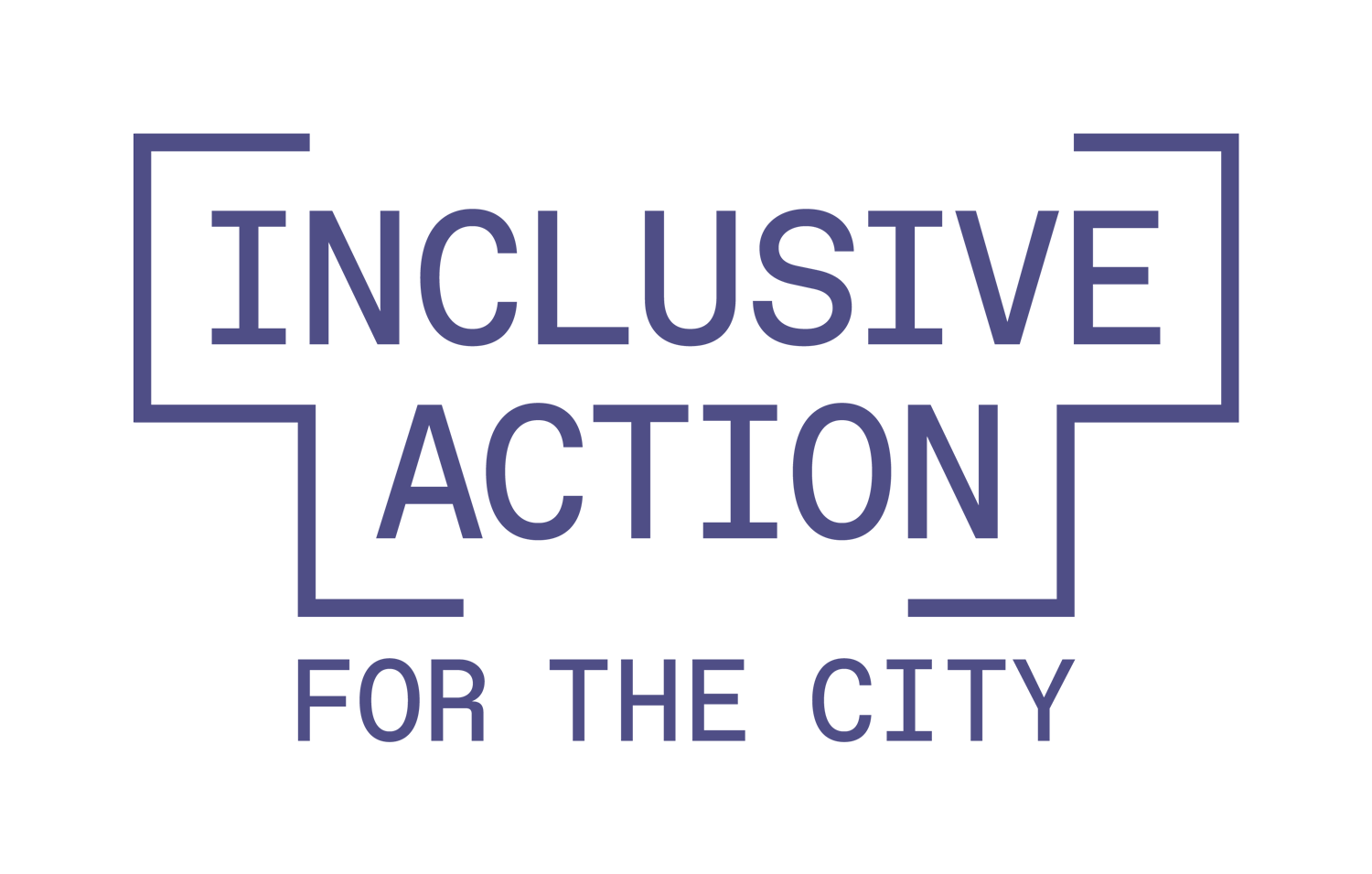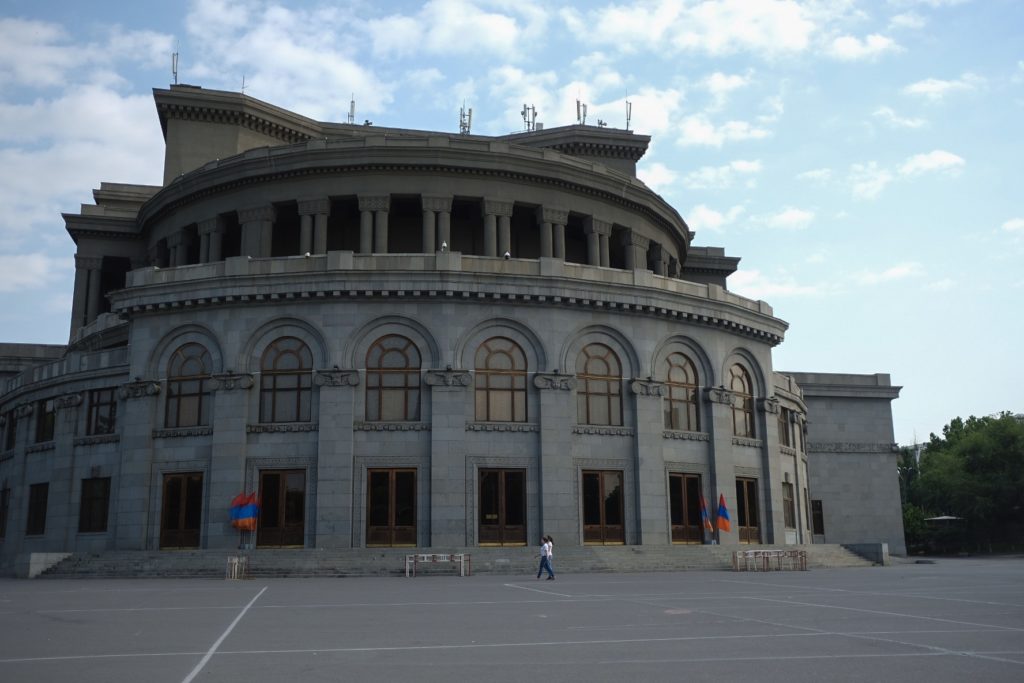Yerevan, Los Angeles and the Culture of Public Space
Last month I travelled to Yerevan, Armenia for two weeks. Each day was filled with dance and music, delicious food, and lots of walking and exploring; it was a true opportunity to recenter and reconnect with my homeland.
As both a proud Armenian and a proud Angeleno, traveling between my two “worlds” is a rewarding yet bittersweet experience. When I finally immerse into one world, I somehow always find myself longing for the other. In LA, we are currently watching our great city endure extreme symptoms of some of its oldest problems: heightened income inequality, a broken transportation system, and a housing and displacement crisis. During this most recent visit to Armenia, I was especially keen on noticing distinct similarities and differences between two of my favorite cities. Culture in both Yerevan and LA is bright and alive, food is flavorful and diverse, and the streets are rich with history. However the car-dependent culture of Los Angeles, with its disconnected neighborhoods feels like a hindrance to communality. Yerevan, a city ⅙th the size of LA, faces its own set of problems, but is more pedestrian and transit-friendly and fosters a more social and communal lifestyle.
via Google
Yerevan, “The City of the Sun”
Armenia is a small country, with a relatively small population of approximately three million, one that has unfortunately been on the decline for the past 30 years with emigration at an all time high. Not a surprising statistic, with the average household income in Armenia at approximately $3,000. Since the collapse of the Soviet Union the country has been locked in a debilitating war with neighboring Azerbaijan over the Nagorno-Karabakh region, resulting in closed borders, subsequent trade embargos, and the severing of diplomatic ties with both Azerbaijan and neighboring Turkey. The Armenian people have indeed seen their share of hardships.
Yerevan, the largest city and Capital of Armenia, is home to one third of the entire country’s population. Older than Rome, Yerevan’s origin dates back to the 7th century where it served as a crossroads for caravan routes between Europe and India, and even further back to the 4th millennium BC where archaeological excavations dated the ancient Urartian military fortress “Erebuni (Yerevan) Fortress” which overlooks the City from the southeast. Centuries of political domination, invasions and war between Arab, Persian, Ottoman, and Russian empires continued to shape Yerevan to be what it is today.
Aerial rendition of Yerevan via Bezdikian Architects
One major transformation for the city was in 1924 when the first general plan of Yerevan under Soviet rule was approved. Armenian Architect Alexander Tamanyan’s master plan was based on the Garden City Movement created by Ebenezer Howard in the late 19th century. Howard's intention with garden cities was to revive urbanized and industrialized cities to instead be “built into nature” to organically merge “all the advantages of urban and rural life.” Garden cities were "self-contained communities surrounded by 'greenbelts,' containing proportionate areas of residences, industry and agriculture.” Yerevan boasts a green ring that goes around the main city center; currently occupying 7% of downtown Yerevan, it separates the urban core from the “larger center,” followed by outskirt communities of greater Yerevan and expanding further to surrounding villages.
Walkability and Public Transportation
One major difference between Yerevan and Los Angeles, is the close proximity of living and social spaces. Residential areas in Yerevan are dense, with the majority of residents living in small apartment units that have shared central courtyards, with easy access to museums, cultural activities, churches, parks, and even a nearby river. I may be biased, but Yerevan is the most walking-friendly city I have ever experienced. Pedestrians can navigate through the City with relative ease and can walk just about anywhere in central Yerevan in under 30-40 minutes, with the help of several major thoroughfares that lead to the main centralized «Ազատություն Հրապարակ» "Azatutyun Hraparak,” or Freedom Square.
Apartments in Yerevan. Image by Natalie Kamajian
In the hot and dry summer months the city sidewalks are relatively empty during the day, decorated with occasional tourists or small groups of chatty, elderly men sitting on public benches crackling sunflower seeds and drinking coffee in the shade. But as soon as the sun sets, Yerevan is a lively and bustling social scene, with couples strolling through the streets enjoying the cool evening breeze, families and large groups sitting at cafes for hours, and children playing in the streets (often times away from their parents’ view) until the early hours of the morning.
Yerevan Pedestrians. Image by Natalie Kamajian
Walkability, in general, is a good indicator of how socially cohesive a society is. Paired with accessible public transportation, these forms of mobility act as a way for people to collectively function, share space, and interact with one another. There are countless buses and small van routes that will take you to every major street corner, even in the outskirts of Yerevan. Drivers will also pick up or drop off passengers in between formal route stops upon request; an attribute of Armenian culture which demonstrates a priority for prosocial behavior over structured regulation. Taxis and a new ride share service called GG are plentiful, relatively affordable, and facilitate easier mobility. Though the built environment has become increasingly friendlier to cars over the past 50 years, Yerevan is not yet completely car-focused, which I appreciate.
A popular form of transportation the "marshrutka" or van. Image by Natalie Kamajian
The Culture of Public Space
In Armenia, there is no shortage of activities that make good use of public space: whether it’s free concerts, communal dancing, or social gatherings. Participating in these occasions revealed to me a cultural relationship Armenians have to public space. Comparing this to Los Angeles, free outdoor events do exist, but driving to get there is (unfortunately) preferred, parking is expensive, and the space often times does not lend itself accessible to neighboring communities.
Young Yerevan residents playing music and dancing at a city park. Image by Natalie Kamajian
Armenians have a communal sense of space; they navigate the public and “private” sphere with a collectivist approach rather than an individualistic one. For example, opening the door and walking into your friend’s, family member’s, or neighbor’s house without an invitation is completely normal and accepted. This relationship with space is actually deeply rooted in cultural practice as accepted in other non-Western, collectivist societies. Even crowded public transportation in Yerevan lends itself to the convergence of personal space, where voluntary acts of kindness occur as seated riders reach out to hold the purses, belongings, and even children of incoming passengers. In this sense, the concept of “strangers” does not exist among the local population; and community is a lived and breathed practice experienced in concert with others.
Yerevan's Opera House at Azatutyan Hraparak or "Freedom Square." Image by Natalie Kamajian
Prior to this year's visit to Armenia, I was under the impression that the built environment plays a primary role in the social cohesion of an urban society. For example, Freedom Square (pictured above) has a large and spacious courtyard and is a central landmark in Yerevan. Because of these physical attributes, this area is conducive to the assembling of large crowds and has historically been a critical gathering point for nation-wide protests and displays of solidarity.
However, the space alone does not affect the ways in which people behave. Rather, the urban design of a city is activated by the cultures that interact and navigate through it. Physical structures are engaged socially and are given a particular historic or cultural meaning, becoming more than just a public square, a monument, a street block, or a park. They become “social structures” that can validate a people’s worth and empower their presence in communal space.









